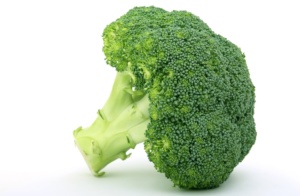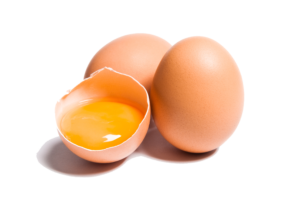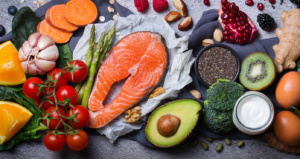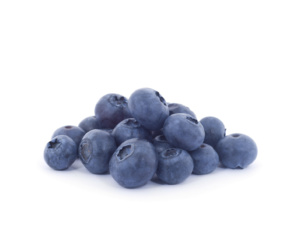Keen On Keto? It’s Not The Only Diet Out There
It’s not the only diet out there. Check out these options for better health and weight loss, too.
Article By Erik J. Martin, CTW Features
In the last few years, Keto seems to be all the craze. But experts caution that it may have more cons than pros and there are healthier and more maintainable dieting alternatives.
The ketogenic diet, which stresses low intake of carbohydrates, high-fat content, and moderate intake of protein, works on the premise that, by depriving your body of glucose primarily obtained from carbs, an alternative fuel called ketones is made from our body’s fat stores, explains Pamela Riggs, MS, RDN, CSOWM, a registered dietitian and board-certified specialist in obesity and weight management with MarinHealth Integrative Wellness Center in Greenbrae, California.
“Foods that fit into this diet plan include avocados, nuts, seeds, cheese, eggs, bacon, salmon, beef and poultry and non-starchy veggies like salad greens and broccoli,” says Riggs. “But while this diet can result in weight loss, decreased body fat, decreased appetite, and hunger control, the potential downsides include fatigue, irritability, headaches and constipation.”
These are among the reasons why U.S. News and World Report graded the keto diet next to last in its annual ranking of 35 different diets.
“Keto does not create dietary patterns that are sustainable and, therefore, doesn’t lead to sustained weight loss for the vast majority of people,” cautions Julie Miller Jones, Ph.D., CNS, professor emerita of nutrition at St. Catherine University in St. Paul, Minnesota.
 Instead, Jones points to the diet that placed tops in the rankings above: the Mediterranean diet.
Instead, Jones points to the diet that placed tops in the rankings above: the Mediterranean diet.
“This is a diet that you can live with for the rest of your life because it’s very balanced and fits most ethnic patterns,” says Jones, who notes that the diet stresses a high consumption of vegetables, fruits, legumes, nuts, fish, olive oil, and whole grains, a moderate intake of wine, and lower consumption of meat and dairy foods. “Studies show that the Mediterranean diet is associated with a reduction in risk of most negative health conditions.”
Another less popular eating approach that’s advocated by experts and backed by solid scientific evidence that it lowers blood pressure is the DASH diet (short for dietary approaches to stop hypertension). This one focuses on a balanced diet low in sodium and saturated fat and high in fruits, vegetables, and whole grains, along with low-fat milk and yogurt, fish, eggs and poultry, nuts, seeds, legumes, and olive oil.
“It’s a very easy diet to initiate and stick to because it’s not excessively restrictive to any one type of nutrient; instead, it encourages balanced nutrition,” Lisa Richards, a nutritionist and health consultant in Edmonton, Alberta, Canada.
If Keto is not for you, explore other tried and true diets like: the Mediterranean diet, the DASH diet, the flexitarian diet, and intermittent fasting! Consider ditching keto, and you might discover a diet that facilitates a lifestyle of healthy eating, lasting results, increased energy, and better digestion.
 Bet you didn’t know that 38 percent of Americans consider themselves “flexitarians,” per Innova Market Insights research. This refers to the flexitarian diet, in which the primary foods consumed are plant-based, with meat, poultry, fish, eggs, and dairy eaten in smaller amounts.
Bet you didn’t know that 38 percent of Americans consider themselves “flexitarians,” per Innova Market Insights research. This refers to the flexitarian diet, in which the primary foods consumed are plant-based, with meat, poultry, fish, eggs, and dairy eaten in smaller amounts.
“A flexitarian is someone who wants to be more vegetarian without giving up meat entirely,” says Riggs. “You eat foods like fruits, vegetables, whole grains, legumes, nuts, and seeds but can occasionally have beef, fish, chicken, and pork while limiting refined and processed foods like white bread, cookies, candy, sugar-sweetened beverages, high-fat or processed meats, and fried foods.”
The drawback of the flexitarian diet, of course, is that you may not lose as much weight as desired unless you stay disciplined and restrict more calories.
While not a new approach to dieting, intermittent fasting is gaining momentum among people seeking a healthier lifestyle.
“This diet is based on the premise of a time-restricted eating pattern, allowing insulin levels to go down for long periods of time, which makes our body burn fat and lose weight,” Riggs says. “The most popular types of intermittent fasting are the 5:2 approach and 16:8 approach. With the former, you eat a normal diet five days a week and then limit calories to about 600 a day for two non-consecutive days a week; with the latter, you consume normal food intake within an eight-hour window and then eat nothing for the other 16 hours.”
The problem is, it may be hard to stick to this eating/not-eating cycle consistently and fit it into your daily routine.
For best results, talk with your doctor, dietitian, or nutritionist before starting any diet plan. And remember that it can take time to determine which diet plan works best for your lifestyle and health needs or goals, so exercise patience.


